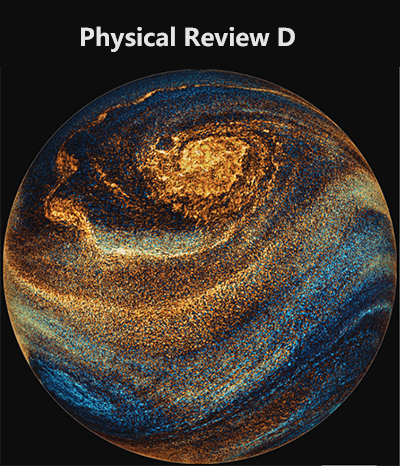The first space-based gravitational-wave detectors
IF 4.6
2区 物理与天体物理
Q1 ASTRONOMY & ASTROPHYSICS
引用次数: 17
Abstract
Gravitational waves provide a laboratory for general relativity and a window to energetic astrophysical phenomena invisible with electromagnetic radiation. Several terrestrial detectors are currently under construction, and a space-based interferometer is envisioned for launch early next century to detect test-mass motions induced by waves of relatively short wavelength. Very-long-wavelength gravitational waves can be detected using the plasma in the early Universe as test masses; the motion induced in the plasma by a wave is imprinted onto the cosmic microwave background (CMB). While the signature of gravitational waves on the CMB temperature fluctuations is not unique, the polarization pattern can be used to unambiguously detect gravitational radiation. Thus, forthcoming CMB polarization experiments, such as the Microwave Anisotropy Probe and Planck, will be the first space-based gravitational-wave detectors.第一个天基引力波探测器
引力波为广义相对论提供了一个实验室,也为研究电磁辐射不可见的高能天体物理现象提供了一个窗口。几个地面探测器目前正在建造中,一个基于空间的干涉仪预计将在下个世纪初发射,以探测波长相对较短的波引起的测试质量运动。利用早期宇宙中的等离子体作为测试质量,可以探测到超长波长的引力波;等离子体中由波引起的运动被印在宇宙微波背景(CMB)上。虽然引力波在CMB温度波动上的特征并不是唯一的,但偏振模式可以用来明确地探测重力辐射。因此,即将到来的CMB极化实验,如微波各向异性探测器和普朗克,将是第一个基于空间的引力波探测器。
本文章由计算机程序翻译,如有差异,请以英文原文为准。
求助全文
约1分钟内获得全文
求助全文
来源期刊

Physical Review D
ASTRONOMY & ASTROPHYSICSPHYSICS, PARTICLES-PHYSICS, PARTICLES & FIELDS
CiteScore
9.30
自引率
36.00%
发文量
3456
期刊介绍:
Physical Review D (PRD) is a leading journal in elementary particle physics, field theory, gravitation, and cosmology and is one of the top-cited journals in high-energy physics.
PRD covers experimental and theoretical results in all aspects of particle physics, field theory, gravitation and cosmology, including:
Particle physics experiments,
Electroweak interactions,
Strong interactions,
Lattice field theories, lattice QCD,
Beyond the standard model physics,
Phenomenological aspects of field theory, general methods,
Gravity, cosmology, cosmic rays,
Astrophysics and astroparticle physics,
General relativity,
Formal aspects of field theory, field theory in curved space,
String theory, quantum gravity, gauge/gravity duality.
 求助内容:
求助内容: 应助结果提醒方式:
应助结果提醒方式:


